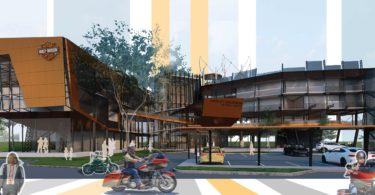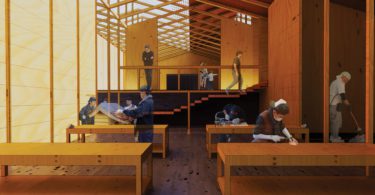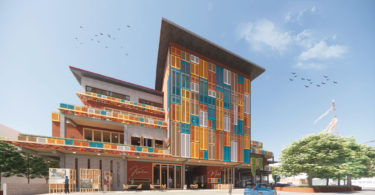Homeless people have often been neglected by society. The aim of the Chow Kit’s Kebun Alley project is to raise awareness about this disadvantaged group and redefine people’s mindset and negative perception towards homelessness. It seeks to give the homeless a new lease of life by nurturing them and refresh the city’s image by introducing a Green pocket.
PHYSICAL SITE
Chow Kit is an underprivileged area in Kuala Lumpur with a complex population structure and activity. The site consists of a flea market that sells second-hand goods, a bazaar, a monorail station, a market and local retail shops. Upcycling and permaculture are the fundamental concepts of the design, which take advantage of the verticality of the infill site between two shophouses. This infill can be used as a place for conducting miscellaneous daily business activities. Public circulation is significant at the front of the site. Although the frontage is relatively narrow, this problem can be overcome by making use of verticality. The project aims to attract human traffic by turning the alley into an urban Green hub with permaculture activities.
SOCIAL DIMENSION
The Kebun Alley seeks to act as a permaculture workshop and encourage public participation that could gradually change their perception towards the homeless. It hopes to serve as a platform for homeless people to connect with the community. At the same time, they could demonstrate and pick up employability skills whilst changing their lifestyle and habits. The homeless people can be hired as employees and provided with opportunities to learn permaculture skills, harvest the crops and exchange for cash rewards and hygiene care. It is hoped that the community can value homeless people as part of the society and a more favourable environment can be created for them.
ENVIRONMENTAL ASPECT
The upcycling design intends to optimise the building materials available. For instance, a shipping container can be used as a workspace, storage and shelter for the users. Steel bars and scaffolding for vertical planting structures can be easily salvaged from construction sites nearby and reused. Wooden pallets and crates, which are readily available from Chow Kit’s wet market, can also be used as furniture and planter boxes.
The Kebun Alley is also designed as a waste recycling station, which turns unwanted rubbish into something valuable. It sets an example for the society by going Green and cultivates upcycling habits, while improving the physical and mental aspects of this urban footprint. By encouraging the implementation of more community engagement projects, this proposal seeks to beautify the city through the establishment of small Green pockets.
School: Faculty of Design and Architecture, University Putra Malaysia
Studio Master: Dr Wan Srihani
Project Name: Chow Kit’s Kebun Alley
Images/Photos: Lee Sim Chuan; Wong Kail Li

 Hong Kong
Hong Kong Singapore
Singapore Indonesia
Indonesia Tiếng Việt
Tiếng Việt ประเทศไทย
ประเทศไทย








